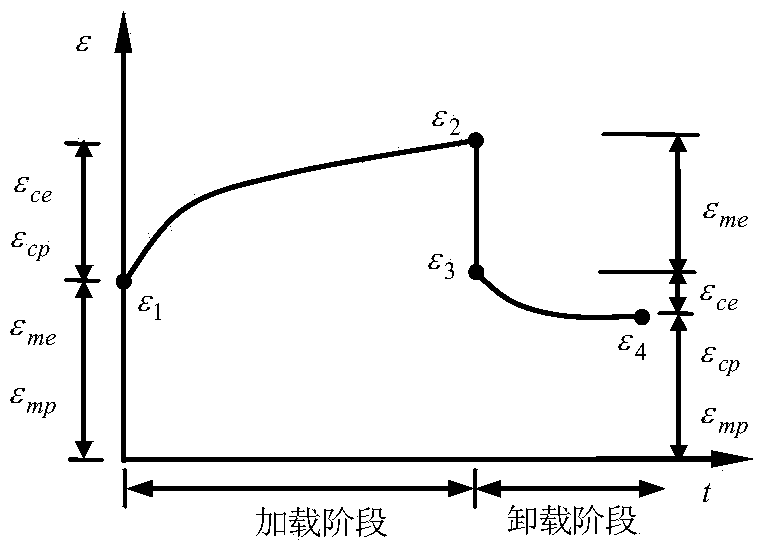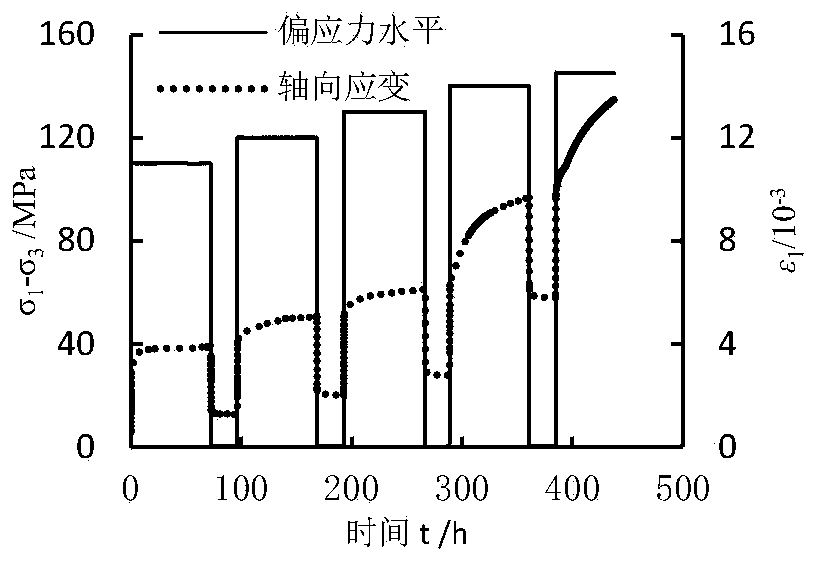Method for separating viscosity-elasticity-plasticity characteristic parameters in triaxial rheological test on rocks
A technology of triaxial rheology and characteristic parameters, which is applied in the field of separation of viscoelastic and plastic properties in rock triaxial rheological tests, can solve the problems of less research and no consideration of the influence of viscous strain, etc., and achieve the effect of simple operation and wide application
- Summary
- Abstract
- Description
- Claims
- Application Information
AI Technical Summary
Problems solved by technology
Method used
Image
Examples
Embodiment 1
[0025] Example 1: figure 1 Shown is the loading and unloading rheological curve and parameter schematic diagram in the rock rheological test of the present invention. First, the complete engineering rock mass is sampled, and the rock mass obtained by sampling is made into a cylindrical sample, and the sample size meets the international standard; Place the prepared cylindrical sample in the three-axis airtight pressure cylinder of the servo testing machine, adjust the indenter of the testing machine so that the indenter of the testing machine is in close contact with the upper and lower ends of the rock sample; adopt the displacement loading mode, and pass the servo test The machine applies hydrostatic pressure to the cylindrical sample, so that the initial confining pressure σ of the sample 31 Loaded to test setpoint σ 3 , depending on the lithology, it can be 0-40MPa, and the rock triaxial rheological test is carried out by using the test method of loading and unloading axi...
PUM
 Login to View More
Login to View More Abstract
Description
Claims
Application Information
 Login to View More
Login to View More - R&D
- Intellectual Property
- Life Sciences
- Materials
- Tech Scout
- Unparalleled Data Quality
- Higher Quality Content
- 60% Fewer Hallucinations
Browse by: Latest US Patents, China's latest patents, Technical Efficacy Thesaurus, Application Domain, Technology Topic, Popular Technical Reports.
© 2025 PatSnap. All rights reserved.Legal|Privacy policy|Modern Slavery Act Transparency Statement|Sitemap|About US| Contact US: help@patsnap.com



